Making up just under a quarter of the entire land area of Japan, the northern island of Hokkaido is the biggest prefecture in the country. While the wide expanses and untouched wilderness make it a paradise for adventurous travellers and nature lovers, it can be hard when you are planning your trip to know just where to visit in Hokkaido.
Best places to visit in Hokkaido
Travel Tips
By Ayaka
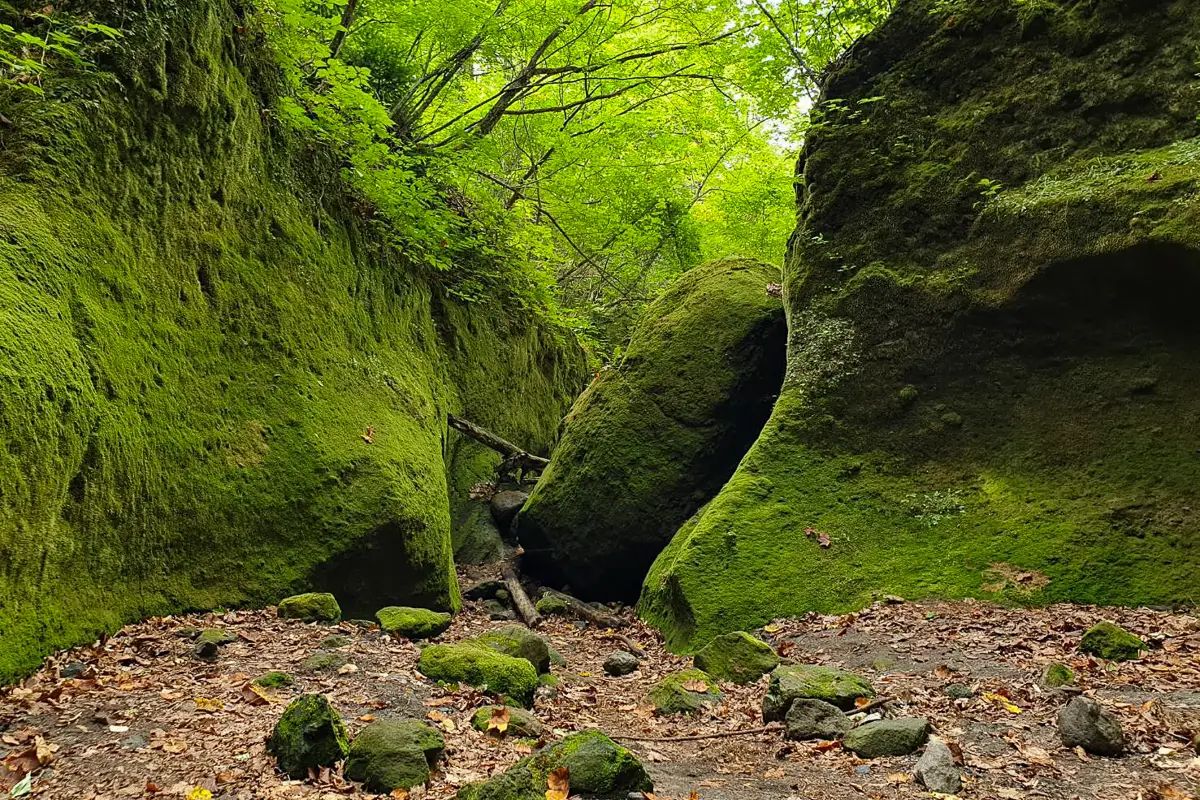
So in no particular order, this is my list of best places to visit in Hokkaido. It includes wild onsen, deep lakes in the caldera of extinct volcanoes, towns that blend the historic culture of Hokkaido and Japan, and islands teeming with alpine flowers. I have included travel tips and my favourite activities in each place. Hopefully, this helps you plan your trip to my home prefecture.
Mount Asahidake #
The highest peak in Hokkaido, Mt Asahidake situated in the north of the Daisetsuzan National Park, is very popular with hikers with over 20,000 people heading for the summit each year. A ropeway takes you up to a plateau at 1,600m / 5,250ft, which is above the treeline and dotted with alpine flowers, such as Alleutian Avens and Creeping Pine shrubs. From there a rocky trail leads past steam vents and to the volcanic summit.
While the views from the summit on a clear day are spectacular, there are many other trails through the mountains starting from the ropeway. My favourite spot in the area is Nakadake Onsen, a wild natural hot spring a few hours hiking to the north of Mt Asahidake.
The hot spring bubbles up out of the ground in the middle of an imposing rocky gully that rises up from a flat plateau dotted with alpine flowers. Sitting with my feet in the pool and taking in the otherworldly landscape is perhaps my favourite lunch spot ever.
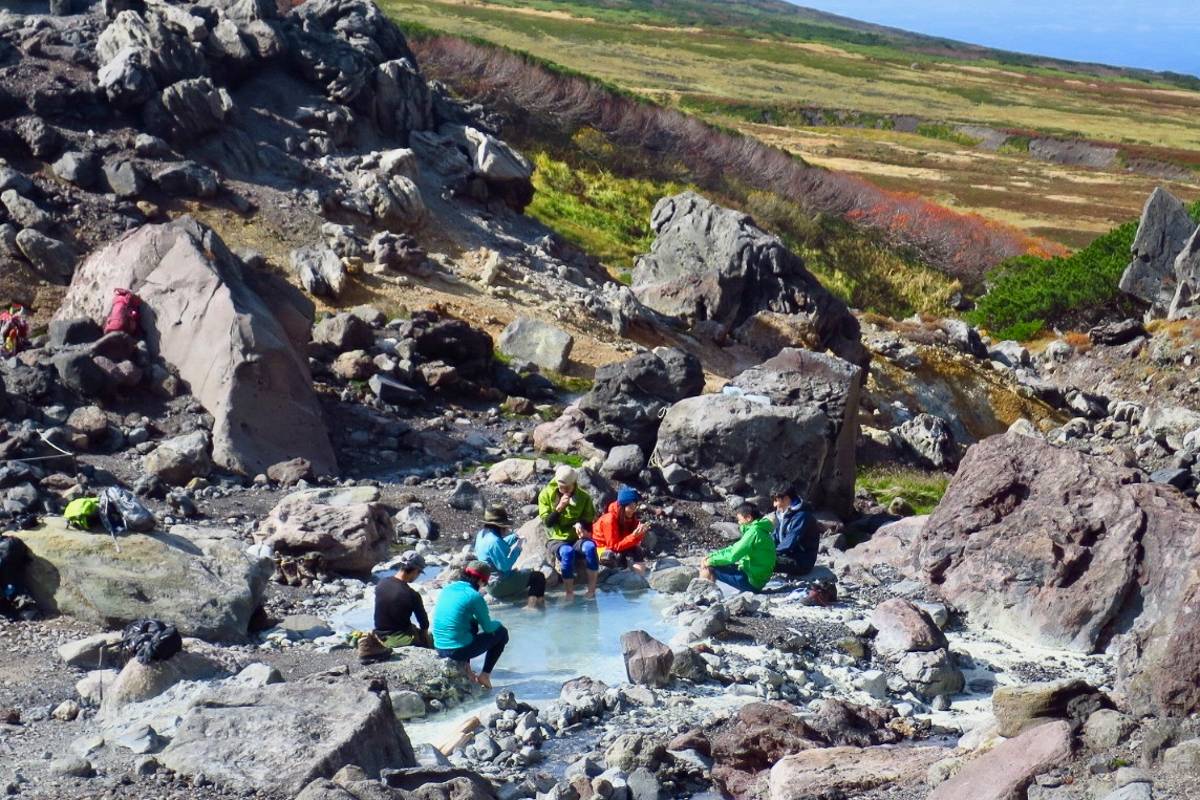
When to visit Mount Asahidake?
From late June to July when a carpet of white Aleutian Avens (Chinguruma) are in full bloom along the trail. The trail is buried under heavy winter snows between November and June.
How to get to Mount Asahidake
The Asahidake Ropeway is an hour drive from Asahikawa. An 8 minute cable car ride takes you to Sugatami station and from there it is about 3 hours of hiking to the onsen.
Best thing to do around Mount Asahidake
Hike through alpine meadows to Nakadake Onsen, soak your feet in the hot spring pool before returning to the ropeway.
More about Mount Asahidake
See Mount Asahidake on Google Maps, see photos, read reviews from visitors and get directions.
Lake Shikaribetsu & Nukabira Onsen #
Tucked away at the southern end of Daisetsuzan National Park, Lake Shikaribetsu and Nukabira Onsen are off the beaten track and both destinations have a lovely quiet natural atmosphere. However, there is no shortage of activities on offer, from hiking to ice fishing.
Lake Shikaribetsu is the highest lake in Hokkaido, situated in the mountains between the Tokachi and Otofuke rivers. The peaks around the lake are home to lots of wildlife, including the Northern Pika (a small alpine rabbit) and in autumn the forested slopes turn orange and red as the leaves change colour.
Owing to the high elevation the lake freezes over in the winter months, hosting an ice festival on top of the frozen lake.
Nukabira Onsen is a small hot spring (onsen) town east of Lake Shikaribetsu, on the main route through the east of Daisetsuzan National Park. Unlike some hot spring towns which saw the development of high rise hotels, Nukabira retains a natural charm with most of the town sitting on one just leafy street.
Nukabira had a train station until the late 1980’s. The tracks have now been removed and the route repurposed into a nature trail, a gentle 8 km / 5 mile walk along the shore of Nukabira Lake, passing over the old unused railway arch bridges.

When to go to Lake Lake Shikaribetsu & Nukabira Onsen?
The autumn colours usually peak in early to mid October.
How to get to Lake Shikaribetsu?
A bus service connects Lake Shikaribetsu to both the town of Shintoku, on the Nemuro train line, or the city of Obihiro which has express train links to Sapporo and a domestic airport.
How to get to Nukabira Onsen
There is a bus service from Obihiro to Nukabira Onsen and some intercity buses between Obihiro and Asahikawa also stop in Nukabira Onsen.
Best thing to do in Lake Shikaribetsu & Nukabira Onsen
Hike to the peak of Mount Hakuunzan, keeping your eyes peeled for Northern Pika while taking in the lake view from the summit.
More about Lake Shikaribetsu & Nukabira Onsen
See Lake Shikaribetsu and Nukabira Onsen on Google Maps, see photos, read reviews from visitors and get directions.
Most adventurous way to visit Lake Shikaribetsu & Nukabira Onsen
Join one of our Adventue Hokkaido Daisetsuzan National Park overnight tours! Both our Around Daisetsuzan 6 Day Hiking Tour and the challenging Daisetsuzan to Akan-Mashu 9 Day Hiking Tour visit Lake Shikaribestu and Nukabira Onsen.
Mount Maruyama (Sapporo) #
Most visitors to Hokkaido pass through Sapporo and stop for a few days to enjoy good food and the bustling nightlife. Often overlooked is Mount Maruyama and the surrounding park, a natural oasis just 30 minutes from the city centre.
The peak of Mount Maruyama is 200 m / 656 ft above the park offering great views over the city, especially in Autumn when the trees have changed colour. There are two routes to the summit, the Hachi-ju-hachi-ga-jo route and the Dobutsuen (Zoo) route, both taking around one hour.
The park is also a melting pot of culture. It was built around the Hokkaido Shrine, which is the largest and most important Shinto shrine on the island. It is host to several festivals, complete with rows of temporary food stands and in spring locals come out to enjoy the cherry blossoms, with over 1,000 sakura trees in the park.
The Hachijuhachi-ga-jo route is named after the famous Buddist pilgrimage in Shikoku and the hiking route is lined with stone Jizo (Budda) statues.

When to go to Mt Maruyama?
While local hikers enjoy walking to the peak year round, the cherry blossoms season between late April and mid May adds another level of beauty to the park.
How to get to Mt Maruyama?
The Maruyama Koen station on the Tozai Line is a 30 minute ride from Sapporo station (change at Odori) and the trailhead for the Hachijuhachi-ga-jo route is a 15 minute walk from the station.
Best outdoor activity in Sapporo
Hike past the many stone Buddas on Mount Maruyama, taking in the city views before returning via Hokkaido Shrine.
More about Mt Maruyama in Sapporo
See Mt Maruyama on Google Maps, see photos, read reviews from visitors and get directions.
Rishiri Island #
Mount Rishiri is a striking sight rising up 1,721 m /5 ,646 ft out of the Sea of Japan and with a shape that resembles Mt Fuji, leading it to also be called Rishri-fuji. This extinct volcano forms an almost perfectly round island, 60 km / 37 miles around, situated at the northern end of the Sea of Japan.
Despite its relatively low elevation, Mt Rishiri is home to an impressive amount of alpine flora. It is listed in the popular “100 famous mountains of Japan” book and after taking in the 360 degree sea views from the summit, with Sakhalin island in Russia visible, I agree that it is deserving of a spot on the list.
But you don’t have to make the 10 hour trip to the peak to enjoy Rishiri, there is a cycling path that runs a half of the way around the island and some lower peaks accessible with only a few hours walking.
While tourism brings some income, the sea forms the backbone of the island economy, with dried Rishiri Kombu (a form of kelp seaweed) being exported around the world. Visitors to the island can sample some amazingly fresh seafood and you can even catch your own dinner on a fishing trip.
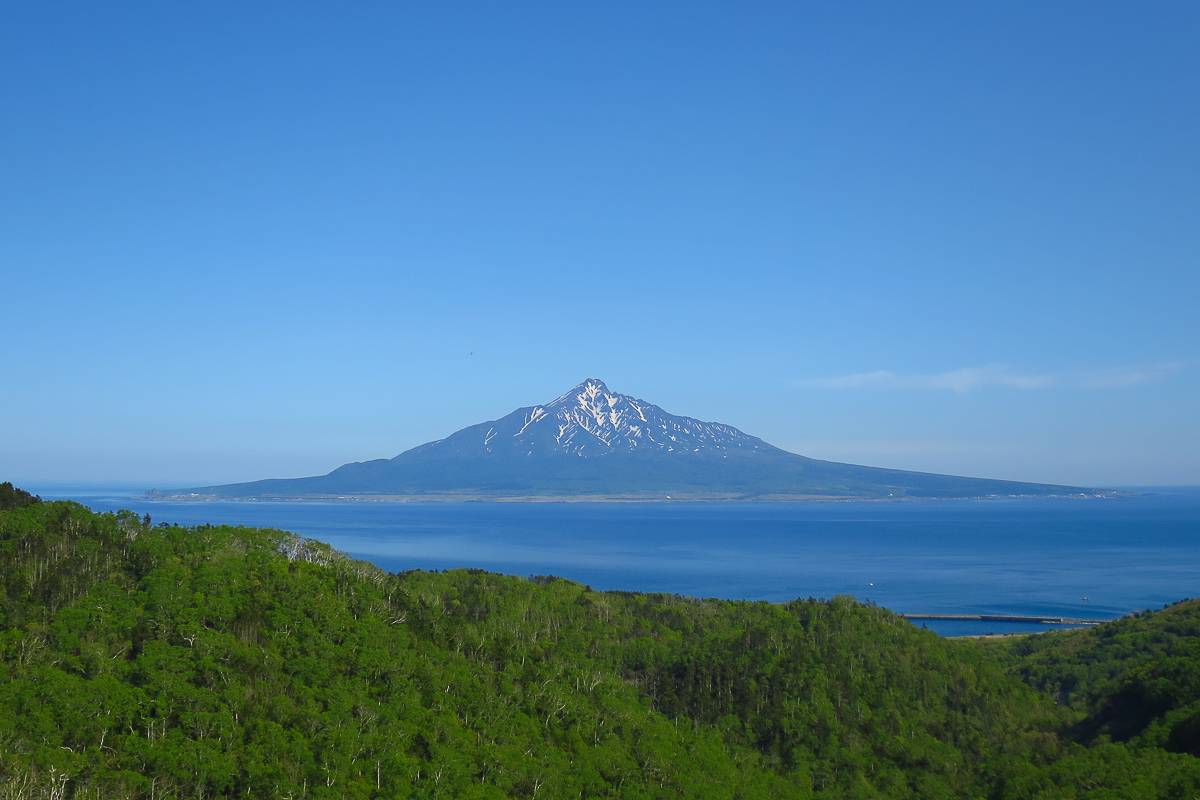
When to go to Rishiri Island
With strong wind and snow, winter (December – March) is only for the hardiest of backcountry skiers and mountaineers. Summer (July – August) brings more settled weather and the biking and hiking trails open up.
How to get to Rishiri Island
There are direct flights from Sapporo year round. There is also a ferry from Wakkanai, which is the northernmost train station in Japan.
Best things to do on Rishiri Island
Hike & bike to explore every corner of the island. It is worth giving two or three days at least on this adventurers’ paradise!
More about Rishiri Island
See Rishiri Island on Google Maps, see photos, read reviews from visitors and get directions.
Rebun Island #
Situated 9.6 km/6 miles further north west of Rishiri Island, Rebun Island is another uniquely remote and wild destination. Known as “the floating flower garden” Rebun is a flower lover’s mecca.
Thanks to cool temperatures and the strong winds that blow across the Sea of Japan, the tree line on Rebun is much lower than even northern Hokkaido, allowing alpine flowers to thrive on the island, despite the highest point being below 500 m / 1,640 ft.
There are few roads on the island, so the best way to explore is on foot. While the coastline features impressive cliffs rising out of the ocean, inland is less rugged than neighbouring Rishiri and the hiking trails on the island are not as physically demanding.
As with Rishiri Island, the seafood is as good as you would expect from an island surrounded by sea that is brimming with life. Sea urchin (Uni) is a local speciality and in the summer months fresh Uni is served raw on top of rice (Uni-don) is a dish not to miss.
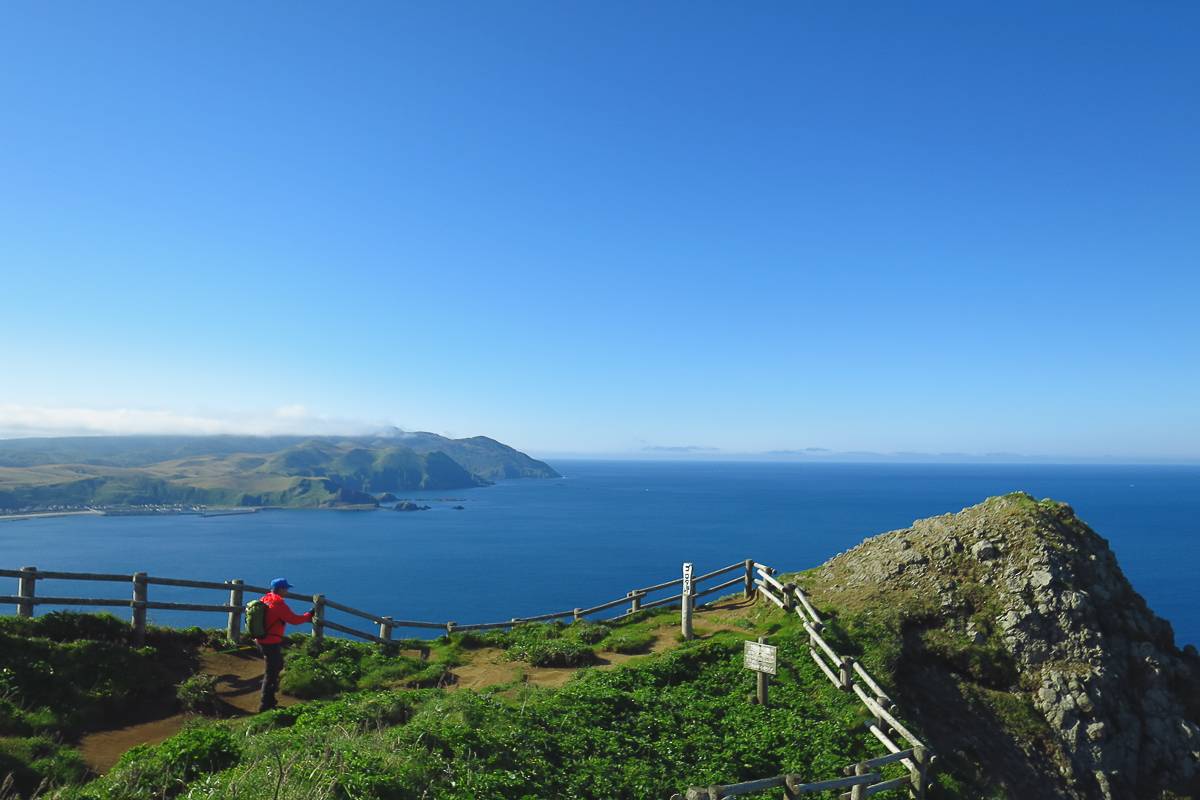
When to go to Rebun Island
June is the best season for the alpine flowers, but it is also the busiest time of the year. You can still enjoy some of the flowers until September and you can find yourself alone on the trails.
How to get to Rebun Island
Unlike its neighbour there is no operational airport on the island, so the only way to get there is on a 2 hour ferry from Wakkanai in northern Hokkaido.
Best thing to do on Rebun Island
I loved walking all the trails from the northern tip to the southern tip of the island, but I must say the Cape Hiking Trail (Misaki Meguri Trail) is my overall favourite, with a medley of gentle hills overlooking the capes and coastlines.
More about Rebun Island
See Rebun Island on Google Maps, see photos, read reviews from visitors and get directions.
Rausu & Shiretoko National Park #
Located on a remote peninsula in northeastern Hokkaido, Shiretoko National Park is one of the wildest corners on the island. The national park is known as a brown bear habitat, with an estimated 500 bears inhabiting the peninsula and it is a top spot to see one of these impressive animals in the wild.
The fishing town of Rausu on the eastern coast of the peninsula is my preferred base when exploring Shiretoko National Park, it has great access to the hiking trails but usually has less visitors than the west coast.
Some of the local fishermen also operate sightseeing cruises to see bears in the summer and drift ice in the winter but the main industry in Rausu is fishing. Stop at any restaurant in town and your meal was likely landed that morning before being brought at the local fish market.
To top it off, the free hot spring foot baths all over town give you a hint of the abundance of geothermal activity in the area and there are several good Onsen (hot springs) to soak in and rejuvenate tired muscles.

When to go to Rausu & Shiretoko
In addition to seeing the fall colours, autumn (September – November) is a good time to see the brown bears as they come down to the shoreline to hunt for salmon
How to get to Rausu & Shiretoko
The nearest airport is in Nakashibetsu, which has daily flights from both Sapporo and Tokyo. From Nakashibetsu it is an 80 minute bus ride to Rausu.
Best thing to do in Rausu & Shiretoko
Take a boat ride and watch brown bears hunting for salmon along the wild coastline.
More about Rausu & Shiretoko National Park
See Rausu and Shiretoko National Park on Google Maps, see photos, read reviews from visitors and get directions.
Want to explore Japan's Far East?
Check out our 9-day tour to Kushiro, Akan-Mashu and Shiretoko National Parks
Lake Shikotsu & Lake Toya #
Sitting within Shikotsu-Toya national park, Lake Shikotsu and Lake Toya are both caldera lakes with spectacular volcanic scenery just a few hours south of Sapporo. There are Onsen (hot spring) hotels on the shores of both lakes and they are a popular getaway for people living in Sapporo.
Lake Shikotsu is the closest of the two lakes and also the second deepest lake in Japan and remains ice-free throughout the year and some hardy locals even stand up paddleboard and dive on the lake throughout winter, a bit too cold for me!
The lake is surrounded by mountains, including the three volcanoes, Mt Eniwa, Mt Fuppushi, and Mt Tarumae. Mt Tarumae is a popular hike in the summer with Sapporo locals who visit to enjoy the alpine plants and moderate hiking trail.
Further southwest is Lake Toya which has one of the most picturesque views in all of Hokkaido, looking out to Nakajima, a 450m high peak rising on an island in the middle of the lake, and Mount Yotei. Just south of the lake is Mount Usu, an active volcano that erupted as recently as 2000.
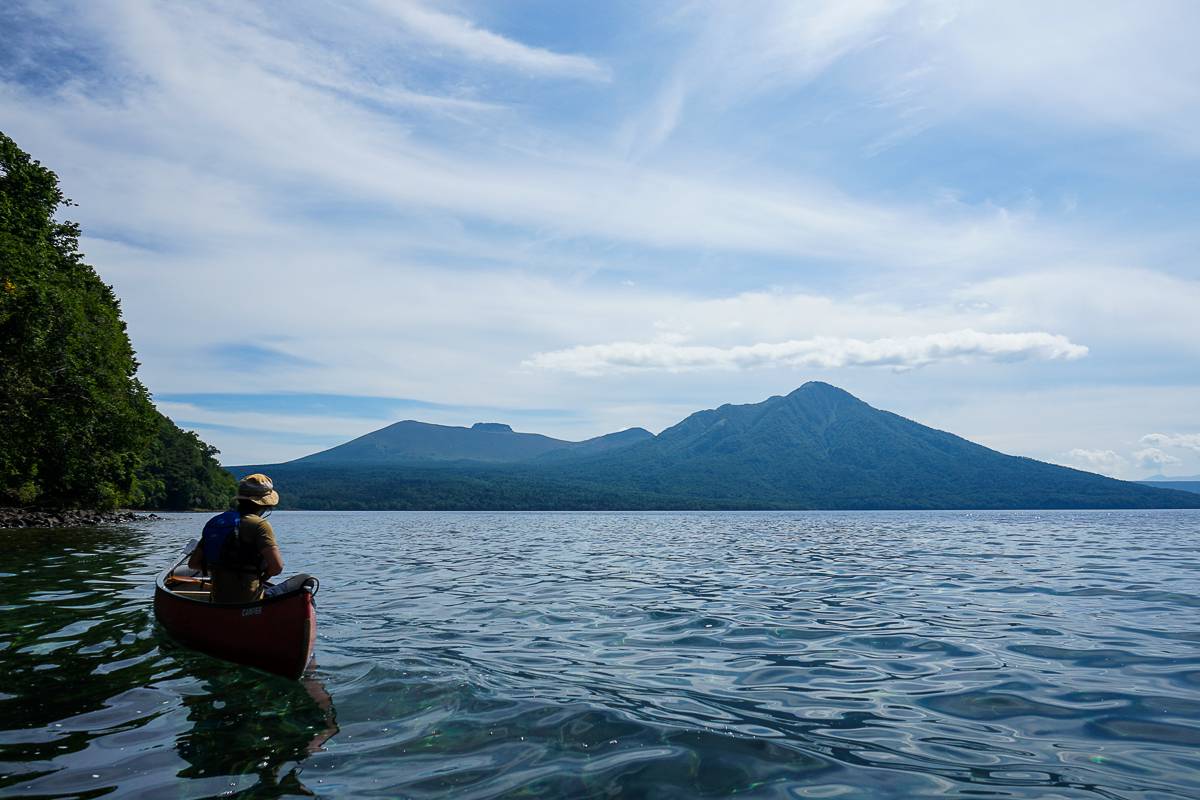
When to go to Lakes Shikotsu & Toya
While impressive year round, there’s something about gazing out from a hot spring bath at the snowy peaks reflected in the lake which makes the winter (December – March) scenery extra magical.
How to get to Lakes Shikotsu & Toya
There are buses to Lake Shikotsu direct from New Chitose Airport, taking about 1 hour. Buses also connect Lake Toya with Sapporo station, but for those flying into New Chitose Airport, it is easier to take the express train to Toya station then transfer to the lake by bus or taxi.
Best thing to do at Lakes Shikotsu & Toya
For Lake Toya, cycle around the lake for 50km/31miles. The Moss Corridor (Koke-No-Kairo) near Lake Shikotsu is a magical place to hike, and of course, afterwards relax in a hot spring bath (Onsen) with a lake view!
More about Lakes Shikotsu & Toya
See Lake Shikotsu and Lake Toya on Google Maps, see photos, read reviews from visitors and get directions.
Matsumae & Esashi #
The historic towns of Matsumae and Esashi are tucked away in southern Hokkaido and less than two hours west from the popular city destination Hakodate. These historic towns provide a glimpse of Hokkaido in the Edo era (1603 – 1863).
Japanese fishing and trading settlements in southern Hokkaido out-date the settlements on the rest of the island so Esashi and Matsumae are considered some of the oldest towns in Hokkaido, dating back to the Edo period.
Traditional buildings from both the Edo and Meiji (late 1800s) periods can still be seen in the towns, giving them a different feel to the rest of Hokkaido.
Matsumae is also home to the only Edo period castle in Hokkaido. The park around the castle has over 8,000 sakura (cherry blossom) trees making it the best spot in Hokkaido for cherry blossom viewing (hanami) in spring.
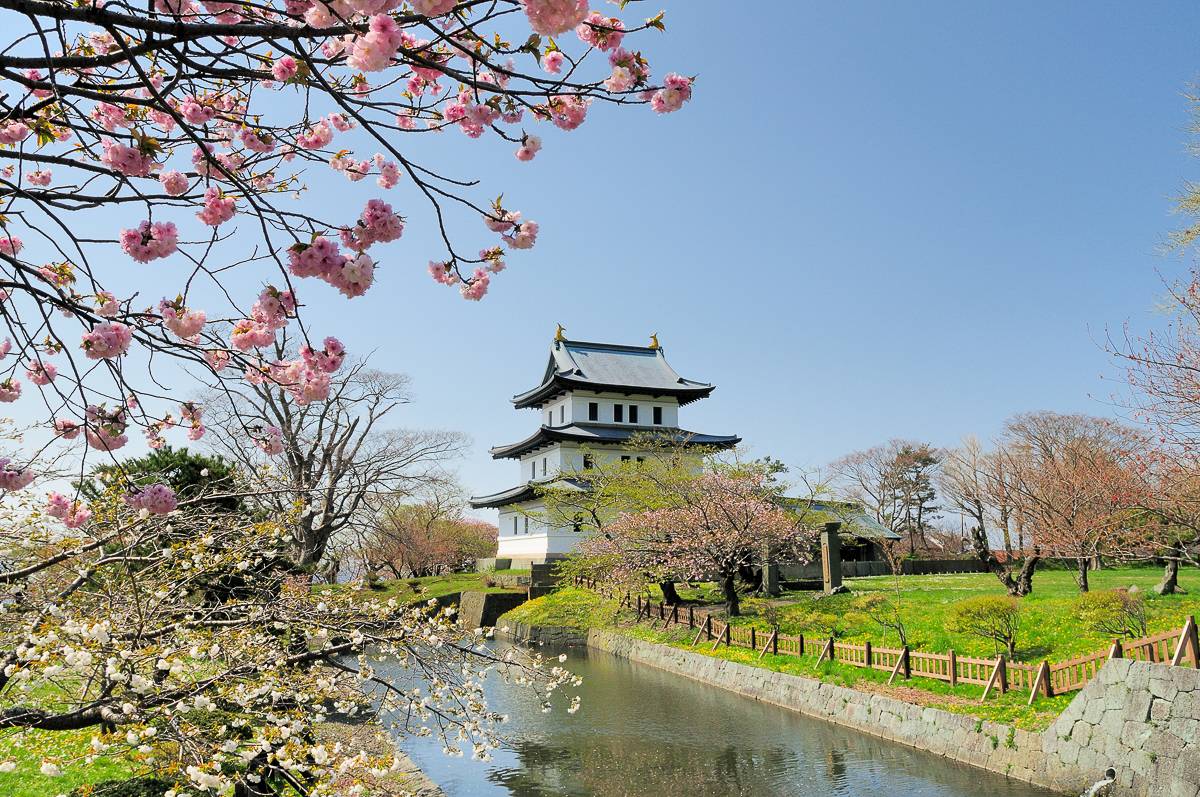
When to go to Matsumae & Esashi
In early to mid May when the cherry blossoms usually peak
How to get to Matsumae & Esashi
Both towns are best accessed by bus from Hakodate, taking around 2 hours. Hakodate has a bullet train station as well as an airport with connections to Sapporo and Tokyo.
Best things to do in Matsumae & Esashi
See the only Edo period castle, Matsumae Castle, in Hokkaido when it is surrounded by pink cherry blossoms. If you are visiting Esashi, be part of the historical summer festival (Ubagami Daijingu Togyo Festival, which has been going for 350 years), held from 9 to 11 August. It is spectacular to see thirteen floats carried in a parade in the sounds of fue flutes and taiko drums.
More about Matsumae & Esashi
Lake Kussharo, Kawayu Onsen & Lake Mashu #
Lake Kussharo and Lake Mashu are another pair of spectacular caldera lakes at the north end of the Akan Mashu national park, in a remote part of eastern Hokkaido.
Lake Kussharo is the largest caldera lake in Japan and cool air often sinks into the crater forming a sea of clouds (Unkai). The many hot springs (Onsen) on the shores of the lake attest to its volcanic origins and the water is actually too acidic for many animals, although the lake does get visited regularly by migrating swans.
Lake Mashu once held the honour of being the clearest lake in the world. The lake is surrounded by steep walls and like neighboring Lake Kussharo the crater often traps fog and cloud.
While the lake scenery is impressive, the small hot spring town of Kawayu Onsen and nearby Mount Iō perhaps steals the show.
Originally built to support sulphur mining on Mount Iō, the hot spring water in Kawayu is unfiltered and 100% natural. The high levels of sulphur in the area make the water highly acidic, so much so that it is recommended to remove metal items such as jewellery before getting in the baths.
Mount Iō is a small but rugged peak with steam still rising from fumaroles and alpine flowers growing in the place of the usual woodland.
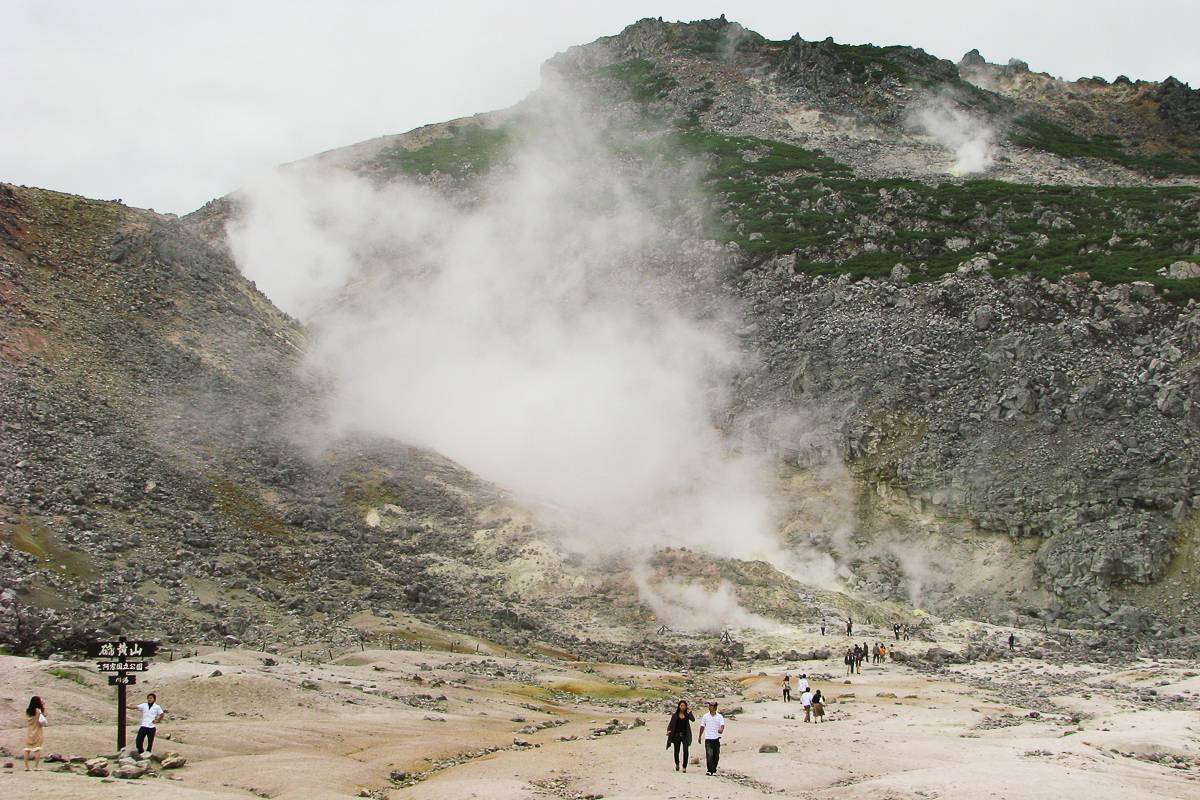
When to go to Lake Kussharo, Kawayu Onsen & Lake Mashu
In late June when the flowers around the base of Mount Iō are in bloom
How to get there to Lake Kussharo, Kawayu Onsen & Lake Mashu
Trains from both Abashiri on the north eastern coast of Hokkaido and Kushiro on the south eastern coast take around 1½ hours to reach Kawayu Onsen station. The station outside the town and there is a bus service into town, however many visitors choose to stretch their legs and walk the last few kilometers.
Best thing to do at Lake Kussharo, Kawayu Onsen & Lake Mashu
Hike to Mount Mokoto to admire the beauty of Lake Kussharo and also to Mount Mashu or Mount Nishibetsu for the view of Lake Mashu. These lakes are admirable from the peaks of the surrounding mountains.
More about Lake Kussharo, Kawayu Onsen & Lake Mashu
See Lake Kussharo, Kawayu Onsen and Lake Mashu on Google Maps, see photos, read reviews from visitors and get directions.
Higashikawa #
Located just 15km east of Hokkaido’s second city Asahikawa, the town of Higashikawa is a picturesque farming community surrounded by rice fields at the foot of the Daisetsuzan Mountains. Given that I call Higashikawa home it should be no surprise that it is included in my list of best places to visit in Hokkaido.
Downtown Higashikawa is made up of just two main streets while the rest of the town is spread out amongst the rice fields.
The area around the town is relatively flat and there are cafes, restaurants, and craft workshops dotted throughout the area, making it perfect for exploring by bike.
The water in town is naturally filtered down from the mountains and is incredibly pure and clean. This water is then used to grow a range of plants, the rice produced in the town is the best I’ve tasted in Hokkaido.
The scenery around the town draws many photographers, it is also known as the “Town of Photography”, and the mountains of Daisetsuzan National park are the backdrop to the scenery in town.
Higashikawa is the perfect base for exploring the mountains in both summer and winter and the fact our local community is full of outdoor enthusiasts, from snowboarders to nature photographers, is a testament to this.
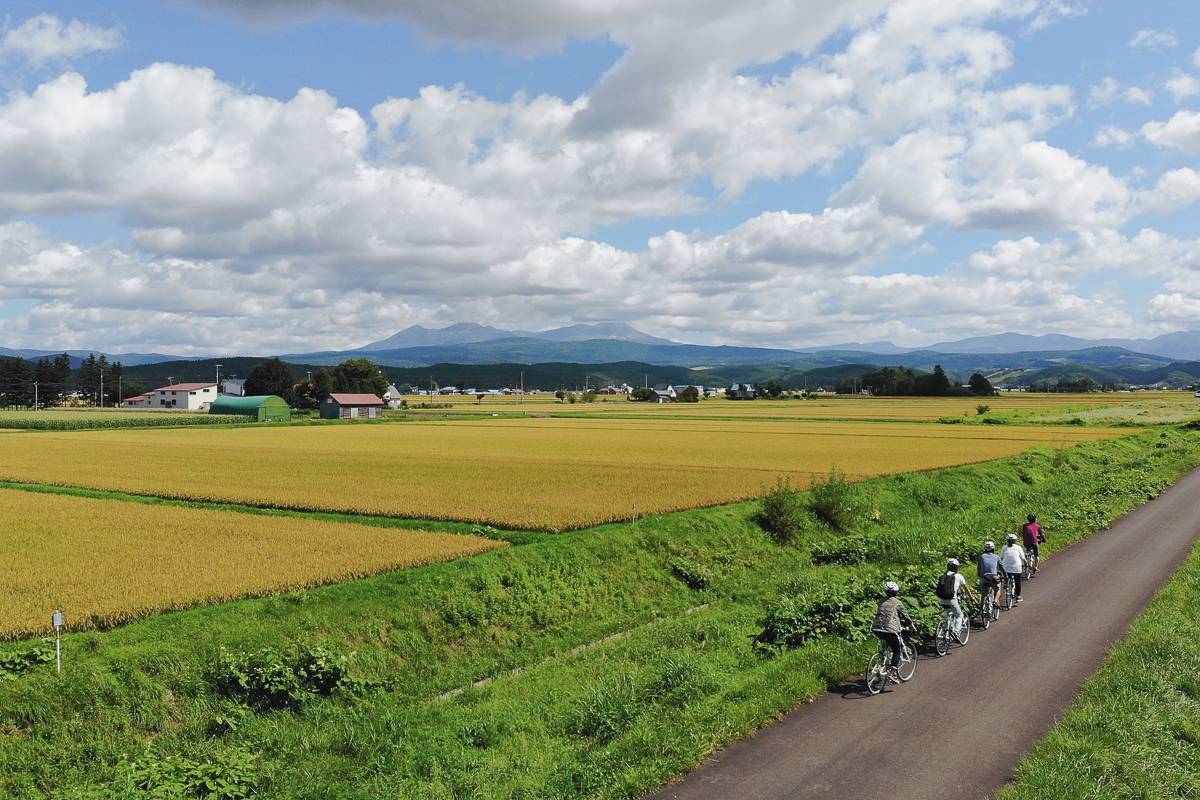
When to go to Higashikawa
In May the rice fields all around the town are flooded ready for planting making the town feel like an island, or in September the rice fields turn gold ready for harvesting.
How to get to Higashikawa
Higashikawa is 30 minutes drive from Asahikawa Station and only 8 minutes drive from Asahikawa Airport. There are regular buses to both the station and the airport.
More about Higashikawa
See Higashikawa on Google Maps, see photos, read reviews from visitors and get directions.
Best thing to do in Higashikawa
Cycle through rice fields that are reflecting the distant mountain peaks, stopping for a coffee and locally grown lunch on the way.
My favourite places in Hokkaido
As you can see there is a lot on offer in Hokkaido, and the places included in this article are just some of my favourites and the places I take friends when they come to visit.
While there are some common themes in Hokkaido (volcanoes, wilderness and nature), the landscape is incredibly varied, as is the culture, food and history.
At Adventure Hokkaido we pride ourselves on using our local knowledge to share the very best experiences and places Hokkaido has to offer. Knowing that many of the best places in Hokkaido are in nature, we have put together our Hokkaido Hiking, Cycling & Nature tours to share the best spots and experiences in Hokkaido.
These are the places we call home and we love to share them with visitors.
Thank you for reading, hopefully you found this article helpful for planning your visit to Hokkaido.
If you have any questions about our tours please get in touch and hopefully we can explore these places together.
Ready to find out more?
See our Hokkaido hiking, cycling & nature tours